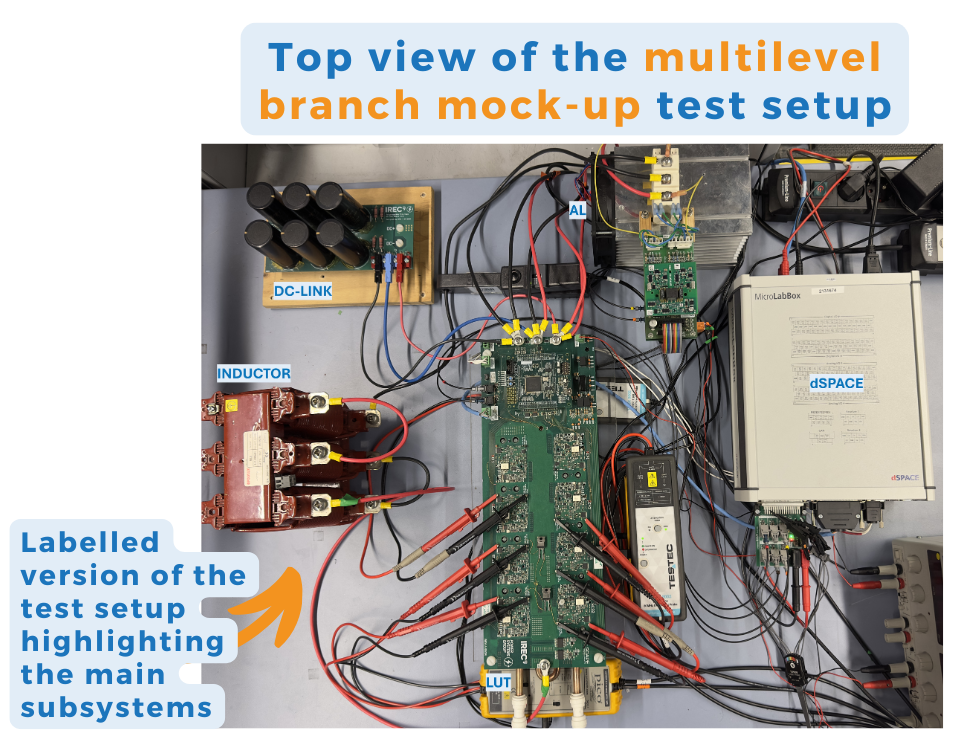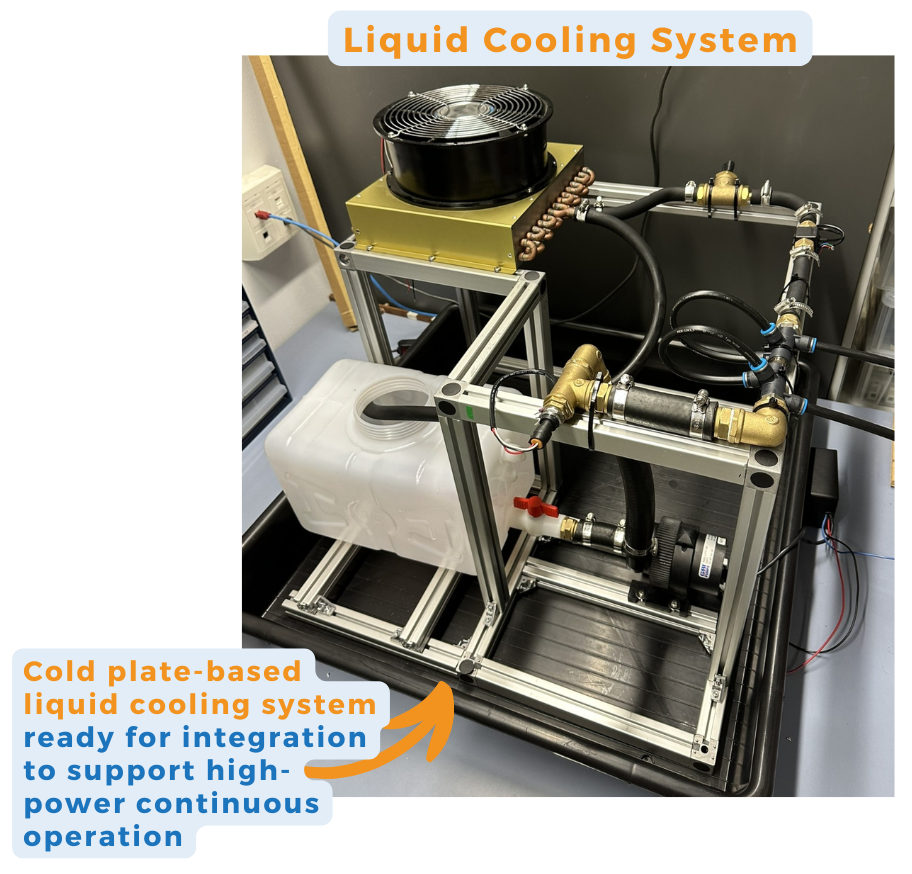Testing SCAPE’s Multilevel Branch Mock-up
As part of the ongoing validation of SCAPE’s modular converter architecture, IREC has successfully set up and initiated testing of a multilevel converter branch connected to a half-bridge leg using the opposition method. This approach, described in the literature as an efficient strategy for testing power converter legs under controlled conditions, allows for precise regulation of the current circulating between both legs, which are connected via an inductor and powered by the same DC link.

In this configuration, the multilevel branch acts as the Leg Under Test (LUT), while the half-bridge serves as the Auxiliary Leg (AL), enabling the emulation of various load profiles. The setup is controlled in real time using a dSPACE MicroLabBox, which provides full control over operating parameters such as peak current and phase shift across the inductor.
Initial tests are being carried out at low current levels and for short durations, confirming the correct behaviour of the multilevel leg and validating the control interface. The cold plate-based liquid cooling system, already assembled, will be integrated in the next phase to enable continuous operation at higher power levels.

These experimental activities are a key part of WP6, which focuses on the hardware implementation of SCAPE’s modular powertrain and its experimental validation under realistic conditions. Validating the performance and controllability of individual converter branches in isolation is essential before scaling up to full-system integration—ensuring reliability, thermal robustness, and compatibility with the project’s modular approach.

